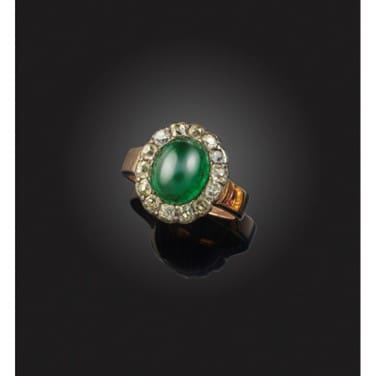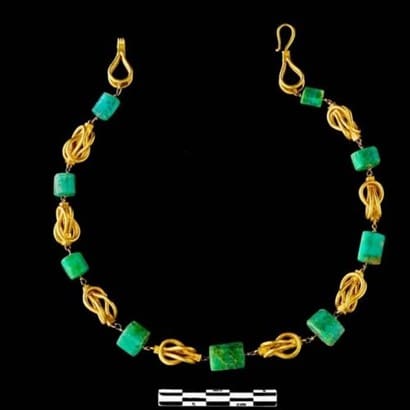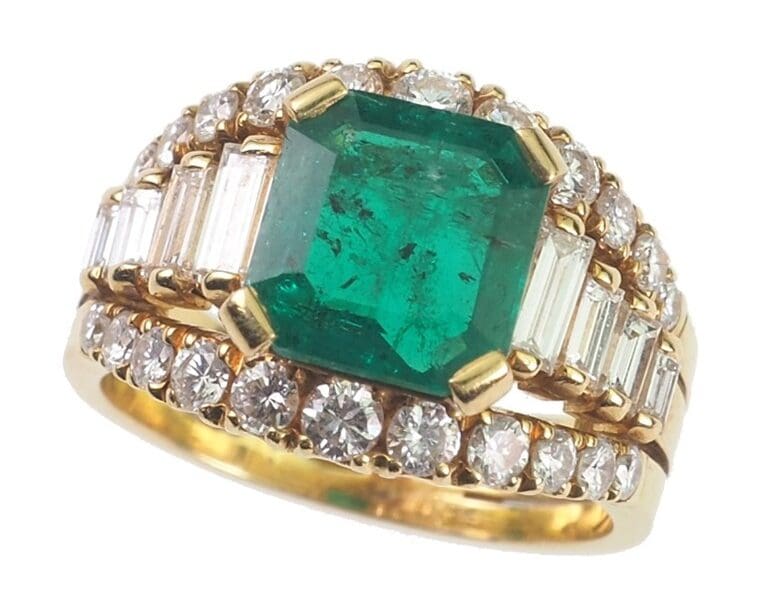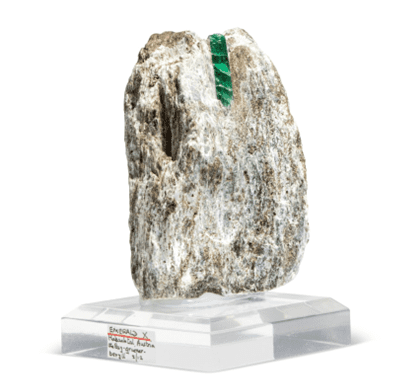A lot that stood out to me around the salerooms last week was this this pretty cluster ring. Sold at Woolley & Wallis and described as ‘An unusual emerald and diamond ring, late 19th century,’ this ring was set with a principal oval emerald cabochon and surrounded by cushion shaped diamonds.
Accompanied by a certificate from Gemmological Certification Services, the emerald’s origin was stated as Austrian, with indications of moderate clarity enhancement. The unusual factor, then, in this lot was the origin of the emerald! Usually at auction we can see Zambian (increasingly!) and the historically favoured Colombian emeralds. An emerald from an altogether different locale in Austria, was an unusual thing indeed!

The Austrian emerald deposit lies in the Habachtal Valley. Located in the Hohe Tauern National Park, and a favourite with hikers, this valley is known for its emerald deposits and rich mining history!

The first written reference to the Habachtal emeralds is in 1797, although in 1992, Roman jewels in the Treasure of Lyon-Vaise included emerald necklaces and earrings set with emeralds mined in the Habachtal Valley. These pieces are thought to have been buried for fear of Germanic raids and the coins allow its burial to be dated to after AD 258.
The first international appearance of Habachtal emeralds was in 1861 at the London World Industrial Exhibition. Mining operations by Samuel Goldschmidt began in the early 1860s, and he sold these crystals from his Viennese storefront. Following his death in the 1870s, the mines were ran by various English companies until around 1913 – purportedly selling the stones as ‘Indian emeralds’ “because the deposit was not known to most of the people in gem trade and would have sold for a much lower price.” (Laing Antiques).
The ring above dates to this later period of English owned mining in the Habachtal area and could well have been originally sold as an ‘Indian’ emerald. Identifying features for Habachtal emeralds are typically heavily included, with “highly-ordered graphite, and extremely water-rich melt inclusions.” (Rainer, 2020). Sold as Indian emeralds and typically assessed as lower quality owing to their multiple inclusions, examples of Habachtal emeralds are not frequently identified! Below is an example of a diamond and 2.10ct Austrian emerald ring currently retailing for €14,500.

Habachtal emeralds are still mined in the present day, although it much lower quantities than the late 19th century. The yield is typically small scale and is reserved for collectors of specimens, much like the example below sold at Christies in 2023.

To arrange your own jewellery valuation, call us on 01883 722736 or email us on [email protected]
Liz worked in Birmingham’s Jewellery Quarter for one of the UK’s leading regional jewellery auction houses whilst completing her FGA and DGA qualifications from the Gem-A, achieving top marks in each.
- Liz Bailey#molongui-disabled-link
- Liz Bailey#molongui-disabled-link
- Liz Bailey#molongui-disabled-link
- Liz Bailey#molongui-disabled-link







